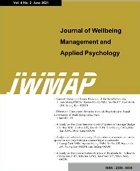 E-ISSN : 2586-6036
E-ISSN : 2586-6036
Vol.6 No.1
Abstract
Purpose: Fine dust is classified as a group 1 carcinogen and poses a significant environmental problem that urgently requires improvement to protect the environmental rights of citizens. Given the difficulty of implementing measures to reduce overseas sources of fine dust, it is essential to first devise specific measures to address domestic emission sources. As such, this study aims to analyze the correlation between earthwork volume control and fine dust concentration as preliminary management measures to reduce the impact of scattering dust at construction sites. Based on real-time air quality information, field management measures will be presented to mitigate the effects of dust emissions. Research design, data and methodology: As examples, we selected construction sites that had recently undergone small-scale environmental impact assessment consultations. The standard earthwork volume was classified into grades using 20% intervals, and we applied AERMOD to predict the weighted concentration of fine dust based on the earthwork volume class and analyzed its correlation. Results: The results of this study demonstrate a strong correlation between earthwork volume and fine dust concentration. By utilizing the correlation analysis between earthwork volume and fine dust concentration on-site, this finding can be utilized as an effective fine dust management plan. Conclusions: This involves determining the daily earthwork intensity based on real-time air quality information and implementing measures to reduce scattering dust.
Abstract
Purpose: This study aimed to implement safe and suitable kangaroo mother care with healthy mothers and newborns immediately after childbirth. In addition, it aimed to assess its effects on maternal attachment, maternal role confidence, and maternal role satisfaction. Research design, data and methodology: A quasi-experimental design was used with pre and posttests. A total of 58 participants were selected by convenience sampling through public notifications at a women's hospital. The control group performed routine care without providing kangaroo contact, and a posttest was performed four weeks after the pretest. The experimental group comprised healthy mothers who had given birth by cesarean section. They performed kangaroo mother care twice a day (60 min each) for four weeks for their newborns after the protocol was validated by an expert. Results: The results showed significantly higher maternal attachment, maternal role confidence, and maternal role satisfaction in mothers who participated in kangaroo mother care than those who did not. Our findings suggested that kangaroo mother care has a positive effect on the enhancement of maternal attachment and facilitation of maternal role confidence and satisfaction. Conclusions: Thus, the expansion and implementation of kangaroo mother care are necessary to promote healthier mother-child relationships.
Abstract
Purpose: VOCs (volatile organic compounds) are all the organic compounds that react with solar rays and increase the concentration of ozone in the troposphere and are partially also known as carcinogens. The adsorption using activated carbon is usually applied to remove VOCs. Research design, data and methodology: The 20 places of surface coating facilities were selected to evaluate the emission amount of VOCs in Seoul. In addition, the removal efficiency of VOCs in 25 places of automobile coating facilities was evaluated. Results: The average emission amount of VOCs was 10.903 kg/hr from automobile coating facilities, while 3.520 kg/hr from other surface coating facilities. The removal efficiency in adsorption with the combustion catalytic process has the mean value of 87.9% and the regeneration efficiency of activated carbon has the mean value of 95.0%. Conclusions: The removal efficiency in adsorption with the biofiltration process has the mean value of 89.8% and the regeneration efficiency of activated carbon has the mean value of 94.8%. The removal efficiency in the plasma catalyst process has the mean value of 79.3%.
Abstract
Purpose: The purpose of this study is a preliminary study to develop a comprehensive information avoidance scale that includes various search contexts. Research design, data and methodology: This study is a part of exploratory sequential design of mixed method for the development of information avoidance scale. Based on the themes derived from the analysis of the in-depth interview data collected in the qualitative research of the first stage of the study, 45 preliminary items on information search and avoidance were constructed. The factors related to information searching included information recognition, information seeking purpose, and information search expectations. Individual, information, time, and system factors were related to information avoidance. Pearson's correlation analysis was performed for the correlation between factor items, and Cronbach's alpha analysis was performed for the reliability analysis of the items. Exploratory factor analysis was applied to examine the construct validity of 35 items of information avoidance. Results: Among the information avoidance items, one of the less relevant among information purpose items, two information factor items, and one time factor item were excluded. Conclusions: A secondary survey should be conducted to confirm the validity and reliability of the scale composed of adjusted items (35) based on the results of exploratory factor analysis. The strength of this preliminary scale is that it was developed based on vivid qualitative data of ordinary people who had experiences of search and avoidance in various search contexts.
Abstract
Purpose: This study analyzed the perfume buying behavior of 561 men in their 20s and 30s. Research design, data and methodology: The demographic characteristics of the study subjects were analyzed frequently, the use of perfumes and chi-square tests were performed to identify differences in purchasing behavior, and the Likert 5-point scale was used to measure the importance of the reasons for choosing perfumes. Results: The most commonly used perfume product was Eau de Toilette, which had statistically significant differences with age and education (p<.05). Perfumes were most commonly purchased at health and beauty stores, with statistically significant differences by age, marital status, and education (p<.05). Conclusions: The study subjects have a high purchasing power for perfume products and are proficient in using smart devices, so they have a high level of information through beauty platforms, so they need to promote online products by introducing live commerce, etc.













